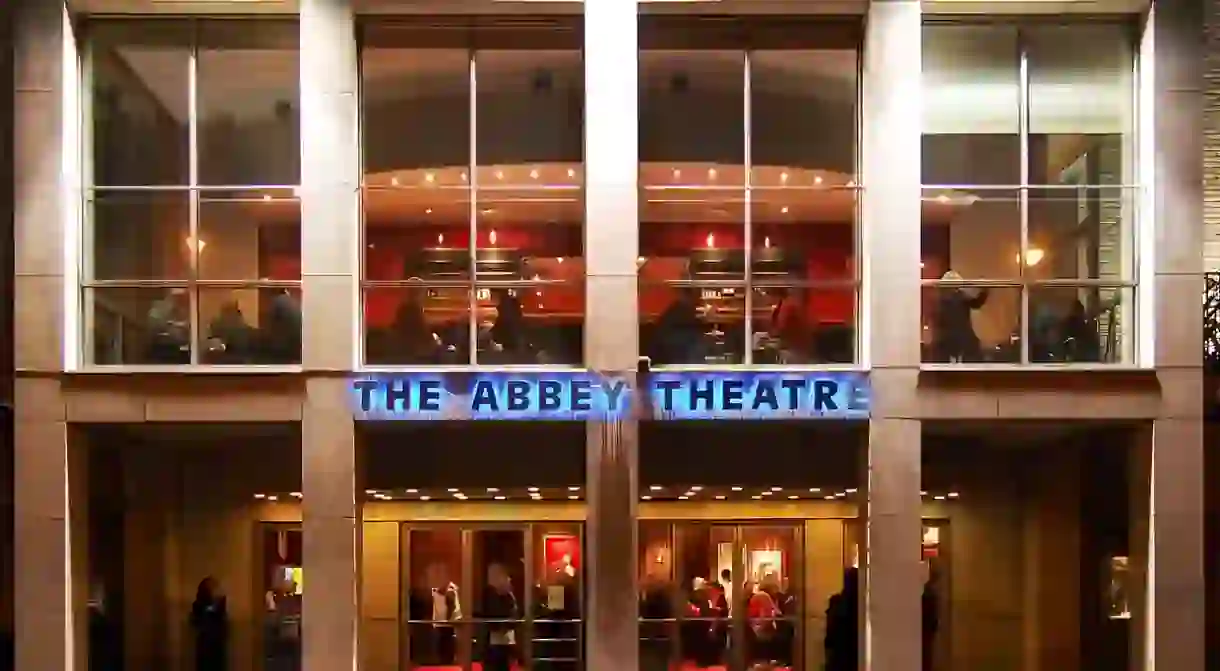A Short Guide To Dublin's Abbey Theatre

At the time of its founding in 1904, The Abbey Theatre in Dublin was strongly tied to the Irish Literary Revival. Known as the National Theatre of Ireland, it staged plays by such distinguished Irish writers as W. B. Yeats and George Bernard Shaw. Political turmoil and financial strain almost led to the closure of the famous playhouse in the aftermath of the 1916 Rising, but a government subsidy and further developments brought it back from the brink.
The idea for the Abbey came from Irish poet W. B. Yeats, dramatist Lady Augusta Gregory and playwright and activist Edward Martyn. This trio had published a ‘Manifesto for Irish Literary Theatre’ in 1897, resolving to found a national theatre in Dublin as part of the renewed interest in Irish writing known as the Irish Literary Revival. After their first attempt – the Irish Literary Theatre – failed in 1901 due to limited funds, they looked to English theatre patron Annie Horniman for help.

Horniman willingly bought the Mechanics’ Hall theatre building on Dublin’s Lower Abbey Street for the establishment of a new National Theatre of Ireland, and thus the Abbey Theatre was born in December 1904. The new venture was initially an all-out success; impressive playbills, featuring names like Yeats, Lady Gregory, John Millington Synge and George Bernard Shaw, attracted hordes of Dublin theatre-goers. But those good days were to be short lived.
http://instagram.com/p/BBcvhhNLiyv/?taken-by=abbeytheatredublin
While respected playwright John Millington Synge’s involvement was initially a great benefit, his controversial 1907 play The Playboy of the Western World led to riots on the streets of Dublin, with some nationalists finding the play offensive to the Irish. And, after a series of inter-company squabbles led to the appointment of inexperienced young playwright Lennox Robinson as the theatre’s new manager, his decision to keep it open on the night of King Edward VII’s death in May 1910 – all other Dublin theatres closed out of respect – had disastrous results, leading Horniman to cut all ties with the Abbey.
http://instagram.com/p/4FHcL0ri2O/?taken-by=abbeytheatredublin
Following this upheaval, the 1916 Rising in Dublin, and Ireland’s Civil War, the theatre was suffering to such an extent that Yeats and Lady Gregory offered it to the newly established Irish Free State as a gift in 1924. It was refused, but in 1925 the theatre was granted an annual subsidy from the government, making it the first state-subsidised theatre in the English-speaking world. The Abbey was able to struggle through the next several decades as a result, until a 1951 fire led to the building being completely renovated and reopened in 1966.
http://instagram.com/p/3RKKRxri9B/?taken-by=abbeytheatredublin
Since the 1960s, the Abbey has enjoyed a much-needed revival after the difficulties of the early 20th century. New playwrights like Brian Friel, Frank McGuinness, Sebastian Barry and Marina Carr have staged their works at the Abbey and its experimental Peacock stage, with plays like Brian Friel’s Dancing at Lughnasa (1990) going on to have worldwide success. Being part of the world-renowned Dublin Theatre Festival has also helped to boost the profile of the Abbey internationally.
http://instagram.com/p/3JT1RfLi-X/?taken-by=abbeytheatredublin
In 2005, the Abbey’s historical owner – the National Theatre Society – was dissolved and replaced by a limited company. The Arts Council of Ireland awarded this new body more than €25 million in funding in 2006, used to refurbish the main auditorium and for other development projects. In spite of these positives, the theatre hasn’t been immune to controversy in recent years. In 2015, the launch of the Abbey’s theatre programme marking the 1916 Rising centenary caused outrage among the theatre community in Ireland and abroad when it was revealed that only one out of the 10 plays was written by a woman, and only three were directed by women.
Regardless of recent controversies, the Abbey Theatre, in addition to being a major cultural attraction, is still very much a writers’ theatre, with a commitment to promoting new Irish writers at the heart of its mission.

The Abbey, 26/27 Abbey Street Lower, Dublin 1, Ireland +353 1 878 7222













